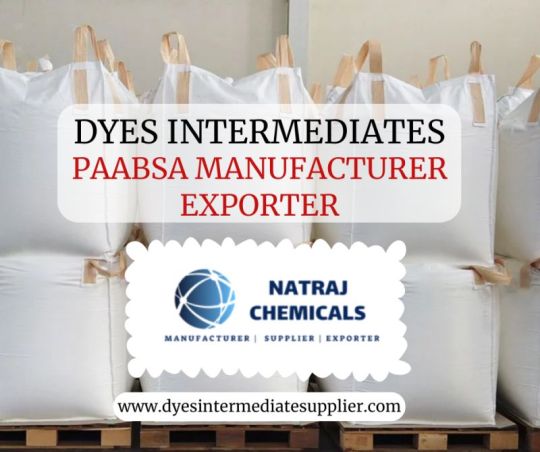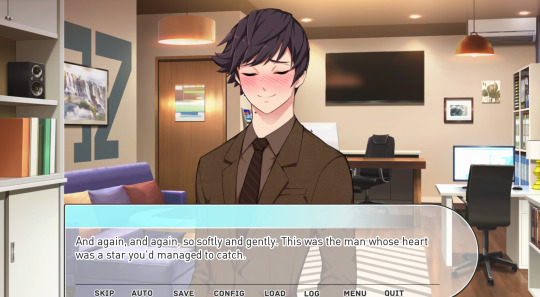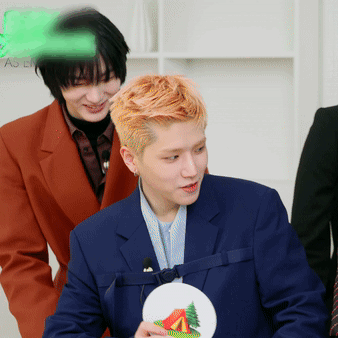#Direct Dyes
Text
Tips for Dyeing that Enhance Textile Quality with Direct Dyes

Direct dyes are celebrated for their vibrant colors and easy application, making them a favorite among textile manufacturers. However, the mastery of using these dyes effectively lies in understanding their properties and integrating best practices that ensure quality and sustainability.
Understanding Direct Dyes
Direct dyes are a class of dyestuffs that are applied directly to the fabric in an aqueous solution, usually with the aid of a substance that enhances the fabric’s affinity for the dye. Predominantly used for cellulosic fibers like cotton, these dyes are valued for their straightforward application process and the vivid colors they produce. Their molecular structures contain substantivity that allows for direct bonding without the need for a mordant, differentiating them from other dye classes, such as vat or reactive dyes. This characteristic makes direct dyes particularly useful for projects requiring consistent, even coverage and a high degree of colorfastness under light exposure.
Pre-Treatment Essentials
Cleaning and Preparing the Fabric: The initial step in the dyeing process involves thoroughly cleaning the fabric. This is crucial as it removes impurities and any residues that might impede the dye uptake. Techniques such as scouring and bleaching are commonly employed to ensure the fabric is pristine, which enhances the uniformity and vibrancy of the dye application.
Applying a Mordant: While direct dyes generally do not require a mordant to bond to the fabric, in some cases, a mild mordant might be used to improve the color’s durability and fastness. This step is particularly useful when dealing with fabrics that will be subjected to rigorous washing conditions or prolonged exposure to environmental elements.
Optimizing Dyeing Conditions
Controlling the Temperature: The temperature at which the dyeing process is conducted plays a pivotal role in the outcome. Most direct dyes require a higher temperature range, typically between 60°C to 100°C. Maintaining this temperature range ensures that the dye molecules are sufficiently energized to bond effectively with the fabric, promoting even distribution and adherence.
Adjusting the pH: The acidity or alkalinity of the dye bath can significantly affect the binding of direct dyes. A slightly alkaline pH is often favored, as it enhances the vibrancy of the dye and aids in the longevity of the color. Adjustments can be made using common agents such as sodium carbonate, which gently shifts the pH without damaging the fabric.
Dye Bath Management: Consistency in the dye bath, in terms of chemical composition and time management, ensures that the dye uptake is uniform across the entire fabric. This includes stirring mechanisms or the use of leveling agents that aid in the even distribution of dye, preventing patchiness and ensuring that every fiber is evenly colored.
After-Treatment for Color Fastness
Soaping: This process involves washing the dyed fabric with a mild soap solution. The primary purpose is to remove any unreacted dye particles that remain on the surface of the fabric. This not only prevents colour bleeding during subsequent washes but also enhances the overall fastness properties of the dye. Soaping is typically done at elevated temperatures to ensure the thorough removal of these excess dyes.
Fixing the Dye: After soaping, a fixing agent is often applied. These agents work by forming a chemical bond between the dye molecules and the fabric fibers, which significantly improves the wash and rub fastness of the dye. Common fixing agents include certain types of polyvalent metal salts, which are chosen based on their compatibility with the fabric and the specific direct dyes used.
Final Rinsing and Drying: The last step in the after-treatment process is a thorough rinsing to eliminate any residual chemicals, followed by drying. Proper drying techniques, whether natural or controlled thermal drying, are crucial as they affect the texture and final appearance of the fabric.
Comparing Direct Dyes vs Reactive Dyes
Color fastness: One of the primary differences between direct dyes and reactive dyes lies in their color fastness. Reactive dyes form covalent bonds with the fabric fibers, making them much more resistant to color fading from washing and sunlight. In contrast, while direct dyes are easier to apply, they tend to have lesser wash fastness, which can be mitigated to some extent through meticulous after-treatment.
Application Techniques: Direct dyes are applied in a neutral or slightly alkaline dye bath and require thorough washing post-application to remove unbound dye. On the other hand, reactive dyes require a slightly more complex process involving an alkaline solution for fixation and acidic conditions for dyeing, which can add to the complexity and cost of the dyeing process.
Environmental Impact: Typically, reactive dyes require more water and produce more waste compared to direct dyes. However, advancements in dye technology and increased awareness of sustainable practices are leading to the development of more eco-friendly variants of both types of dyes, aimed at reducing their environmental footprint.
By understanding the specific characteristics and application methods of direct dyes compared to reactive dyes, manufacturers can make informed decisions that align with their product requirements, sustainability goals, and market demands. Choosing the right dye not only affects the quality and appeal of the final textile product but also impacts the environmental footprint of its production process.
About Meghmani Global
At Meghmani Global, we have honed our expertise in the art and science of dyeing since 1977. Starting with a single product, our portfolio now spans a wide array of dyes, pigments, and chemical products, meeting the needs of various industries globally. Our commitment to quality and sustainability is embedded in our innovative approach, which aims to reduce environmental impact while delivering exceptional value to our customers.
Source URL:
0 notes
Text

Direct Dyes
We are delighted to introduce RedSun DyeChem, a reputable manufacturer and exporter of direct dyes. With our unwavering commitment to excellence, we have been delivering top-quality products since our establishment in 2000.
At RedSun DyeChem, we prioritize maintaining a high level of confidence by consistently providing superior products that meet international standards. As specialists in direct dyes, our expertise and focus enable us to offer a comprehensive range of vibrant and reliable solutions for various industries.
Our team is dedicated to understanding and meeting the diverse needs of our clients, ensuring customer satisfaction at every step. With our extensive experience and expertise, we aim to be your trusted partner in fulfilling your direct dyes requirements.
To explore our premium range of direct dyes and discuss how we can meet your specific needs, kindly visit our website bestdirectdyes.com or reach out to us directly. We look forward to the opportunity of serving you and building a long-term mutually beneficial relationship.
Website: https://bestdirectdyes.com/
Mo: +919825005217
Email: [email protected]
1 note
·
View note
Link
Dyes are organic compounds and are used to add colour to different materials. Majorly two types of dyes are natural and synthetic. The dyes are available in multiple colours and shades.
Did you know the different types of dyes and their usage?
Click on the below link to read more information.
https://www.dyespigments.net/blog/what-is-dyes-different-types-of-dyes/
#What is dye#What is dyes#Different types of dyes#Usage of dyes#Synthetic Dyes#Natural Dyes#Acid Dyes#Basic Dyes#Direct Dyes#Reactive Dyes#Leather Dyes
0 notes
Text

Paabsa Para-Aminoazobenzene 4 Sulfonic Acid ,C12H11N3O3S ,CAS NO : 104-23-4 Exporter from India Natraj chemicals
For More Information Visit Our Website https://www.dyesintermediatesupplier.com/
#direct dyes#chemical & dyes news#chemical suppliers#acid dyes#manufacturing#dyes and pigments companies#dye sublimation perth#chemical industry#export from india#dyes and pigments market#basic dyes#dyestuff#natural dyes
0 notes
Text
#chemworld#chemworld international#dye manucaturer in USA#solvent dye#acid dyes#basic dyes#direct dyes#disperse dyes#reactive dyes
1 note
·
View note
Text
Home | Jagson
JAGSON GROUP OF COMPANIES exports of reactive dyes, acid dyes,direct dyes and VAT dyes.
#Jagson#JagsonKolorKapital#Jagson Colorchem#Reactive Dyes#Disperse Dyes#Dycrosperse#Acid Dyes#Direct Dyes#Vat Dyes#Basic Dyes#Pigments#Food Colors#Napthol Salts.
1 note
·
View note
Link
Direct Black 22 Manufacturers In India - Direct dyes consisting of Direct Black 38 are reportedly prominent from fundamental and disperse dyes with the aid of their pH-established chromatographic conduct on cellulose . For extra associated facts and prices you can visit the website online.
0 notes
Text
Thinking about the Spankoffski brothers naturally having hair like Tinky’s and they just Do Not Like It™️ so they dye it brown
#like what if they were ginger or blonde yk#think about it#young goat bros having an absolute mess of blonde hair that cannot decide what direction it wants to go in#Tinky throwing a hissy fit when they dye their hair#starkid#hatchetfield#nerdy prudes must die#nightmare time#tgwdlm#ted spankoffski#theodore spankoffski#ted tgwdlm#peter spankoffski#pete spankoffski#hot chocolate boy#tnoy karaxis#tinky npmd
219 notes
·
View notes
Text
Baxter is howl and this line convinced me

#there has to be direct inspiration right?#howls moving castle#baxter ward#melodramatic man who dyes his hair and cant accept his feelings#cheeeeeeck#our life#our life baxter#our life beginning and always#olba#gb patch
149 notes
·
View notes
Text
I love how Cleo talks about her chat, we're 'evil and wicked, but nice to her'. It's like we're a bunch of street cats she found and took pity on and now every chat message is another dead mouse she doesn't know what to do with
#zombiecleo#zombie cleo#hc cleo#hermitcraft#the evil and wicked is her direct quote from crafts stream#ive just had this in my drafts for a while#tw animal death#watching dye dry
690 notes
·
View notes
Text

Discover the world of direct dyes manufacturers and explore global regulations. Learn about compliance and safety measures for these dyes. Stay informed about safe and reliable dyeing processes.
0 notes
Text





RIWOO
ELLE KOREA
#i love that they used a temporary dye or spray to give his hair that peachy tone#as divisive as the hair is i like that riwoo is the one pushing the creative direction#anyway#riwoo#boynextdoor#elle korea#bnd#bonedo#forbnd#useroro#eritual#userfoive#usermask#ultkpopnetwork#dailybg#kpopccc#kpopedit#kpopco
23 notes
·
View notes
Text
i dyed my hair on wednesday and im cleaning my room so i think i am beating the depression but we shall see
#direct correlation btwn when did i dye my hair last and if im depressed or not#alao direct correlation btwn the decrease in tumblr blog text posts. which seems backwards tbh
18 notes
·
View notes
Text

Natraj Chemicals Manufacturer and Exporter of paabsa From India
For More Information visit Our Website https://www.dyesintermediatesupplier.com/
#direct dyes#chemical & dyes news#acid dyes#export from india#chemical industry#chemical suppliers#dyes and pigments companies#manufacturing#dyes and pigments market#dye sublimation perth
0 notes
Text
omg i didnt even tell you guys about a very serendipitous thing that happened last saturday. so bf and i took the bus to the next town over to hang out with one of his friends, and we decided to head back around 4:45 i think? and for some reason the bus thats supposed to take us back to the city stops running at 3:30 on saturdays....makes no sense but okay. and his friend doesnt have a car so theres licherally nothing we can do aside from walk like 3 miles to a bus stop that will at least take us vaguely near bf's house. so him and i start walking, thankfully it was only like 75 degrees out. and him and i are talking abt whatever and we're walking by a parking lot and some guy yells "hey do you need a ride" at us, and my boyfriend turns and says something along the lines of "YOOO ITS BILL(my mom's boyfriend)" and so we got a ride home from bill. turns out he was doing instacart and thats a pretty good area for it, but he was already planning on going home when he picked us up. so it was just a very nice coincidence that he was driving home while we were trying to find any bus that could take us to the city lol. shout out to my guy bill
#hes such a real one. he directed that horror movie i did makeup for in 2021#and he dresses exclusively in tie-dye. the few times ive seen him not in tie-dye were for formal events#one of which being a funeral last year where he dressed like a 90s hacker. his vibes are insane#i get why my mom likes him lol
13 notes
·
View notes
Text
i’ve got the stuff *i shadily look around me and pull a container of neon pink hair dye from the depths of my very cute jacket and slide it across the counter and the cashier rings me up and says nothing because they’re not paid enough for this shit*
#getting my hair dyed tomorrow yippee#this pink glows under black lights :)#it’s very cool#i’ve never done my whole head w it i think last time i used it i did my undercut + roots and had the rest highlighter yellow#it was def a look#tho this time i will not be doing my undercut that shit is so annoying i haven’t done it in years#love pink it’s a great color i haven’t done it in a hot minute though#i’m cutting it close but i really need the color before the semester starts so i can go clown-mode before i lose the momentum#i was born to be a clown i was also born to have everyone look at my in awe because i look great and it’s hard w/o the colored hair#also i have a resting bitch face and the mask helps but the hair helps even more. when it’s bright people will like. actually talk to me#so many people ask me for directions. much more than when i didn’t dye my hair#i think the bright colors make people think i’m friendly which is nice#i’m not like. unfriendly i just kinda mind my own business unless i’m in the mood for mischief#in which case the color doesn’t help but who cares. i’m here to clown about and ignore my sorrows and the pink helps :)
12 notes
·
View notes